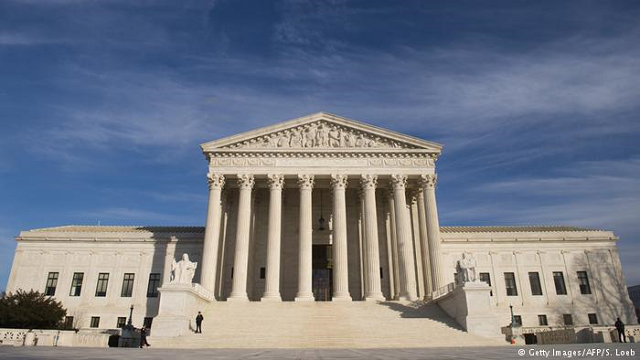Resisted, rejected, resigned: past US Supreme Court battles
Brett Kavanaugh's nomination to the US Supreme Court has been an extraordinarily bitter public spectacle

US Supreme Court. PHOTO: AFP
But US history is rife with examples of other nominees to the nation's highest court whose Senate confirmations were equally controversial.
Some nominees ended up being rejected, others passed by the narrowest of margins and some would-be justices never made it to the Senate floor at all for consideration.
Senate panel backs Trump's Supreme Court pick Kavanaugh
Here is a look at other recent notable nominations to the nine-member Supreme Court and their fate.
Clarence Thomas, a former chairperson of the Equal Employment Opportunity Commission, was nominated by President George H W Bush in July 1991 to replace Thurgood Marshall, the first African American justice on the Supreme Court.
Thomas, who is also black, faced accusations during his Senate hearings of having sexually harassed Anita Hill while she was his subordinate at the EEOC.
Thomas denied the allegations and was confirmed 52-48 by the Senate in October 1991 in one of the closest votes in history. A staunch conservative, Thomas, 70, remains on the court and is its longest-serving member.
Robert Bork, an appeals court judge, was nominated to the Supreme Court by President Ronald Reagan in 1987.
Senate Democrats opposed Bork's nomination based on his perceived hostility to court rulings on civil rights and other grounds and it was rejected by a 58-42 vote, giving rise to the term 'borking.'
Merriam-Webster dictionary defines 'borking' as "to attack or defeat [a nominee or candidate for public office] unfairly through an organised campaign of harsh public criticism or vilification."
Kavanaugh himself accused Democrats of seeking to 'bork' his nomination.
Kavanaugh, accuser face scrutiny at Senate hearing
Reagan subsequently named Anthony Kennedy to the seat and he was confirmed 97-0. Kennedy announced his retirement this year and President Donald Trump named Kavanaugh to replace him.
Bork died in 2012 at the age of 85.
Merrick Garland, an appellate court judge, was nominated by President Barack Obama in March 2016 to replace Justice Antonin Scalia, a Reagan appointee and staunch conservative who died the previous month.
The Republican-majority Senate refused to hold hearings on Garland's nomination ahead of the November 2016 election, and it lapsed in January 2017 with the arrival of a new Congress.
Several Republican Senators have accused Democrats of opposing Kavanaugh's nomination as 'revenge' for their treatment of Garland.
Harriet Miers, a former White House counsel and deputy chief of staff, was nominated to the Supreme Court by President George W. Bush in October 2005 to replace Sandra Day O'Connor, the first woman justice.
Miers' nomination met with immediate resistance from Democrats and some Republicans who questioned her qualifications and experience.
Bush withdrew her name three weeks later and appointed Samuel Alito, who was confirmed by a 58-42 vote and continues to serve on the court.
Abe Fortas, a former head of the Securities and Exchange Commission and Yale University law professor, was confirmed to the Supreme Court in 1965 after being nominated by President Lyndon B Johnson.
In June 1968, Johnson named Fortas, his close friend, to become chief justice, replacing the retiring Earl Warren.
Fortas was forced to withdraw his name from consideration as chief justice, however, when accusations of ethics violations arose during his Senate confirmation hearings.
He resigned from the court the following year amid the threat of impeachment and died in 1982 at the age of 71.





1701351241-1/Afghan-refugees-(3)1701351241-1-208x130.webp)













COMMENTS
Comments are moderated and generally will be posted if they are on-topic and not abusive.
For more information, please see our Comments FAQ